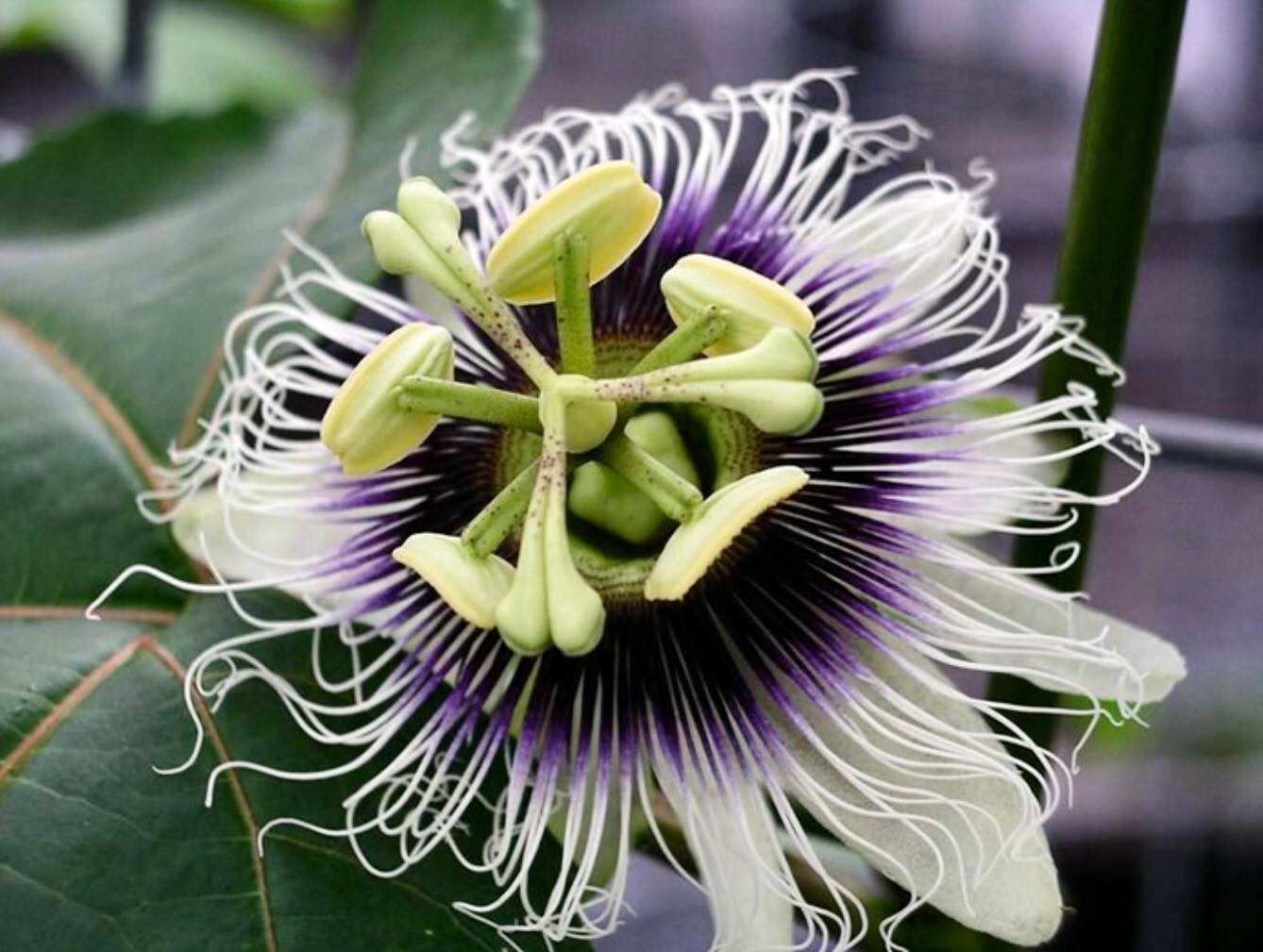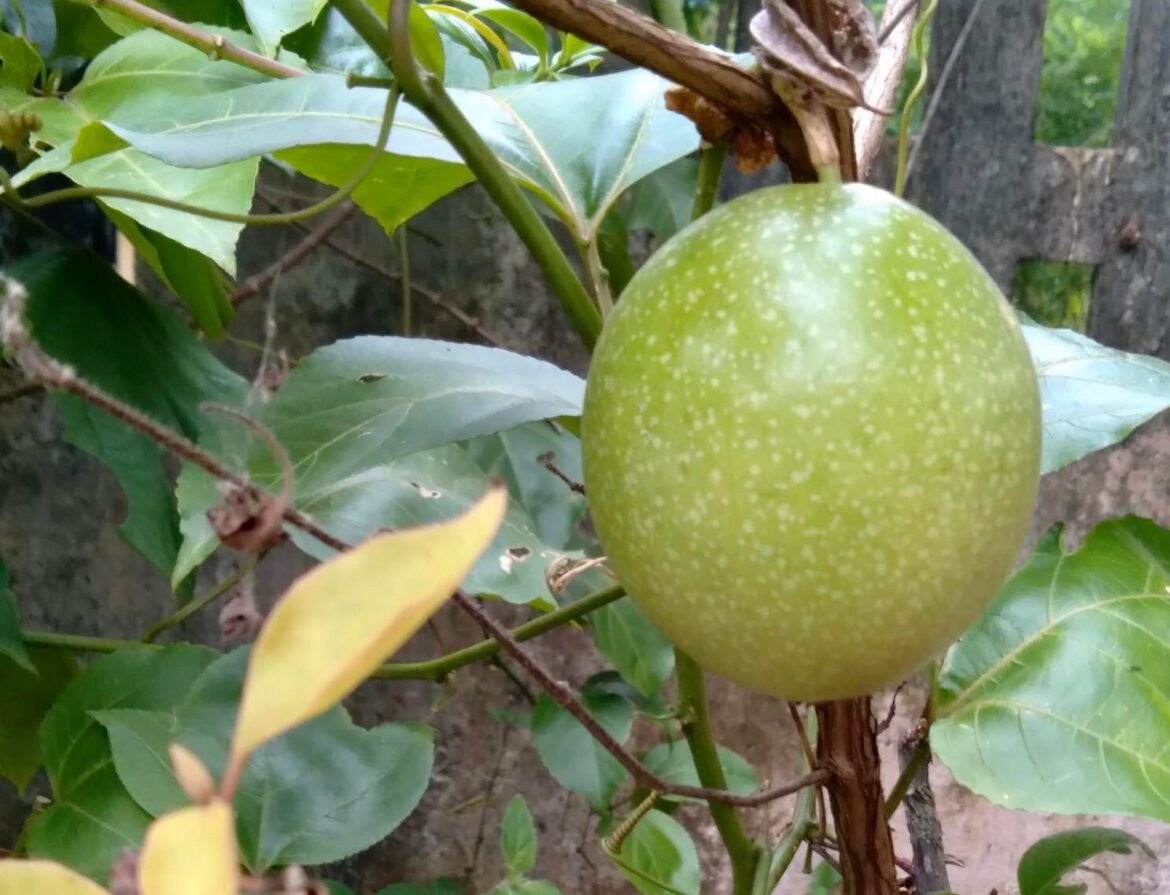Text by Henrylito D. Tacio
Photos: Wikipedia
If you have seen the Hollywood movie Sideways, you probably remember that scene where Paul Giamatti mentioned that he smelled passion fruit in one of the wines he tried.
Actually, there are two types of passion fruit (scientific name: Passiflora edulis), and both have clearly differing exterior appearances. The bright yellow variety of passion fruit can grow up to the size of a grapefruit and has a smooth, glossy, light, and airy rind. The dark purple passion fruit is smaller than a lemon.
The fruit was given the name “passion” by Catholic missionaries who thought that certain parts of the fruit bore some religious connections. These missionaries, who were joined by the Spanish conquistadors in South America (where the fruit was native), saw a way of illustrating the crucifixion: The three stigmas were to reflect the three nails in Jesus Christ’s hands and feet.
On the other hand, the threads of the passionflower were believed to be a symbol of the crown of thorns. The vine’s tendrils were likened to the whips. The five anthers represented the five wounds. The ten petals and sepals are regarded to resemble the apostles (excluding Judas and Peter).
If you haven’t seen a passion fruit yet, see the pictures in this article. It is an egg-shaped berry covered by a smooth thick skin; it is the size of a small apple and is yellow, pink, or purplish-brown in color. It contains a large number of black seeds surrounded by tegument, which caused the Spanish to nickname it the “little pomegranate.”
Fresh passion fruit is known to be high in carotenoids (vitamin A), potassium, and dietary fiber. Passion fruit juice is a good source of ascorbic acid (vitamin C).
It is easy to prepare passion fruit. It is cut in half lengthwise, and the seedy pulp is scooped out with a spoon. It can also be squeezed through two thicknesses of cheesecloth or pressed through a strainer to remove the seeds. The resulting rich juice, which has been called a natural concentrate, can be sweetened and diluted with water or other juices (especially orange or pineapple) to make cold drinks. The juice can also be used to flavor cocktails or fruit salads.
After primary juice extraction, some processors employ an enzymatic process to obtain supplementary “secondary” juice from the double juice sacs surrounding each seed. The high starch content of the juice gives it exceptional viscosity. To produce a free-flowing concentrate, it is desirable to remove the starch by centrifugal separation in the processing operation.
Passion fruit has several uses. In Australia, where it is available commercially fresh or in canned, passion fruit is commonly used in desserts, such as the topping for the pavlova (a meringue cake), cheesecake, and vanilla slice.
In the Dominican Republic, passion fruit (called chinola) is used to make juice and jams. The chinola-flavored syrup is used on shaved ice. The fruit is also eaten raw and sprinkled with sugar. In nearby Puerto Rico, parcha (as the fruit is known) is widely believed to lower blood pressure.

In Brazil, passion fruit mousse is a common dessert, and passion fruit seeds are routinely used to decorate the tops of certain cakes. Passion fruit juice is also very common. In Indonesia, it is eaten straight as a fruit. It is also common to strain the passion fruit for its juice and cook it with sugar to make a thick syrup. Bottles or plastic jugs of concentrated syrup are sold in many supermarkets. Dilution of one part syrup to 4 (or more) parts water is recommended.
In Hawaii, where it is called lilikoi, passion fruit is normally eaten raw. Hawaiians usually crack the rind of the lilikoi either with their hands or teeth and suck out the flavorful pulp and seeds. The lilikoi-flavored syrup is a popular topping for shave ice. Ice cream and mochi are also flavored with lilikoi, as well as many other desserts such as cookies, cakes, and ice cream. Lilikoi is also favored as jam, jelly, as well as butter.
In the Philippines, where the fruit is recently introduced, it is commonly sold in public markets and in public schools. Some vendors sell the fruit with a straw on it to suck the seeds and juices inside. Unfortunately, it is not so popular because of its sour flavor, and the fruit is very seasonal.
Unknowingly, the seeds of passion fruits yield 23 percent oil, which is similar to sunflower and soybean oil and accordingly has edible as well as industrial uses. The seed meal, which contains about 12 percent protein and 50-55 percent fiber, has been found to be unsuitable for cattle feed.
Passion fruit has some medicinal properties. In fact, there is a revival of interest in the pharmaceutical industry, especially in Europe. In herbal medicine, the plant and leaves are used for a liquid extract which is antispasmodic, sedative, and narcotic. It is prescribed for neuralgic pains, debility, nervous headaches, hysteria, spasms, and convulsions. There are some reports that infusion of powdered flower buds is prescribed for bronchitis, as a wound wash, and to expel worms.
Passion fruits are propagated from seeds. Before you plant the seeds, remove the aril (fleshy attachment) attached to them, as it inhibits germination. You may want to dry the seeds first, as it is easier to remove all membranes and arils at that point. If the pulp is left on the seed, the seed may mould instead of germinating.
Plant the cleaned seeds and cover them with soil to twice their thickness. Cover the seedbed with some boughs to increase humidity. Or, grow them in pots that can be covered. In this case, wait until the plants are about 10 centimeters tall before planting them in their permanent spots. For the first two weeks after transplanting, water the seedlings frequently.
For those who want to grow passion fruit on their farm or backyard, here are some tips culled from various sources:
Location: Plant passion fruit vines in full sun except in very hot areas where partial shade is preferable. The vine can be rather rampant, so it is important to plant it next to a chain-link fence or install a strong trellis before planting. The plants can also be trained into an attractive arbor. Passion fruits can grow 15 to 20 feet per year once established and must have strong support. It is generally short-lived (5 to 7 years).
Soil: Passion fruit vines grow on many soil types, but light to heavy sandy loams with a pH of 6.5 to 7.5 is the most suitable. Excellent drainage is absolutely necessary. Also, the soil should be rich in organic matter and low in salts. If the soil is too acidic, lime must be applied. Because the vines are shallow-rooted, they will benefit from a thick layer of organic mulch.
Watering: Regular watering will keep a vine flowering and fruiting almost continuously. Water requirement is high when fruits are approaching maturity. If the soil is dry, fruits may shrivel and fall prematurely.
Fertilization: Passion fruit vines are vigorous growers and require regular fertilizing. A good choice is 10-5-20 NPK (nitrogen, potassium, and phosphorus) applied at the rate of 3 pounds per plant four times a year. Too much nitrogen results in vigorous foliage growth at the expense of flowering. Passion fruit vines should always be watched for deficiencies, particularly in potassium and calcium, and of less importance, magnesium.
Pruning: Pruning is necessary to keep the vines within bounds, to make harvest easier, and to keep the plants productive by maintaining vigorous growth. Remove all weak growth and cut back vigorous growth by at least one-third. In very hot areas, allow a thick canopy of foliage to grow around the fruit to prevent sunburn.
Harvest: The fruit will quickly turn from green to yellow when ripe and then fall to the ground within a few days. They can either be picked when they change color or gathered from the ground each day. To store passion fruit, wash and dry them gently and place them in bags. They should last two to three weeks at 50 degrees Fahrenheit. The fruit is sweetest when slightly shriveled.

